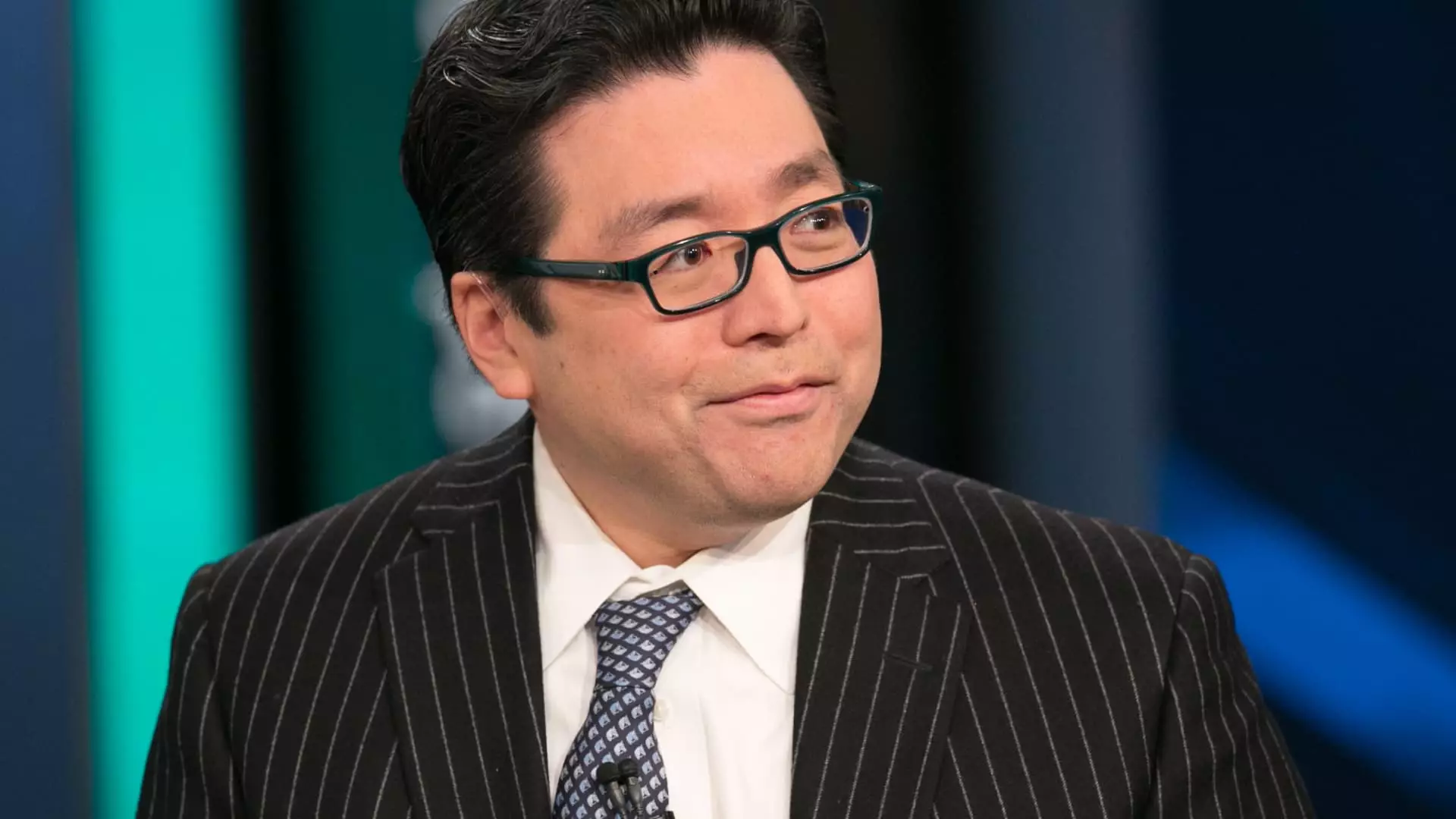The cryptocurrency space is no stranger to dramatic shifts, but BitMine Immersion Technologies’ recent strategic realignment marks a particularly audacious move. Traditionally a modest player in bitcoin mining, the company is making a stark pivot by appointing Fundstrat’s Tom Lee—a market strategist with a reputation for bullish crypto forecasts—as chairman, and initiating a $250 million private placement to aggressively accumulate ether (ETH). This decision reflects more than a mere portfolio rebalancing; it signals a deeper recognition of Ethereum’s growing dominance as the preferred blockchain for stablecoins and decentralized applications (dApps). However, BitMine’s transformation is as fraught with risk as it is laced with opportunity.
Ethereum’s Allure: The “ChatGPT” of Crypto?
Tom Lee’s colorful comparison of stablecoins to “the ChatGPT of crypto” aptly captures the explosive growth and innovation underway in this segment. Notably, stablecoins—digital assets pegged to stable financial instruments—have catalyzed broader blockchain adoption across various sectors, from merchant payments to financial services. Since most stablecoins operate on Ethereum, the blockchain benefits directly from increased transaction volume and network activity. BitMine’s strategy to accumulate ETH aligns with this macro trend, aiming to leverage Ethereum’s ecosystem expansion for shareholder value. This approach reflects a subtle but significant paradigm shift in how crypto firms view their treasury assets—not just as passive holdings, but as strategic levers to attract investors and capture future growth.
The Perils of Concentration and Illiquidity
Despite the seemingly attractive narrative, BitMine’s initiative should be approached with caution. The company’s market capitalization stood at a meager $26 million before its recent announcement, coupled with notoriously thin trading volumes and a nearly 50% drop in share value over the past year. Pursuing an aggressive $250 million private placement to convert a significant portion of cash reserves into ether may amplify financial vulnerabilities rather than mitigate them. Ethereum’s price, though historically resilient, remains highly volatile. Concentrating treasury reserves in ETH creates substantial exposure to market swings, potentially pressuring BitMine’s already precarious stock performance. The risk is compounded by the relatively unknown status of BitMine itself, which lacks the institutional clout or liquidity buffers of industry heavyweights.
A Broader Trend Toward Multi-Token Treasury Strategies
BitMine is not alone in this tactical evolution. Other public firms such as SharpLink Gaming and platforms like DeFi Development are also diversifying treasury holdings beyond bitcoin—ethically echoing a broader industry sentiment. Interestingly, SharpLink has courted Ethereum credibility by appointing Ethereum co-founder Joseph Lubin to its board, underscoring the community’s expanding influence in traditional business structures. This emerging wave of multi-token treasury strategies suggests that the simplistic bitcoin-only narrative for corporate crypto holdings is rapidly losing ground. At the same time, balancing innovation with prudence remains a delicate act, particularly for smaller companies like BitMine attempting to punch above their weight.
Taking a Balanced View: Innovation Requires Tempered Optimism
While BitMine’s pivot demonstrates visionary ambition by aligning with Ethereum’s undeniable growth story, it also reveals how speculative enthusiasm can collide with fundamental market realities. As investors and stakeholders sift through shifting crypto treasury strategies, a nuanced appreciation of risk, liquidity, and corporate governance quality will be paramount. Tom Lee’s high-profile involvement undoubtedly lends credibility, but the sustainability of this bold new direction will depend on execution and market conditions beyond sheer crypto hype. In an era where blockchain innovation accelerates at breakneck speed, thoughtful risk management must accompany strategic pivots to guard against the kind of volatility that could erase slim margins or erode investor confidence.

